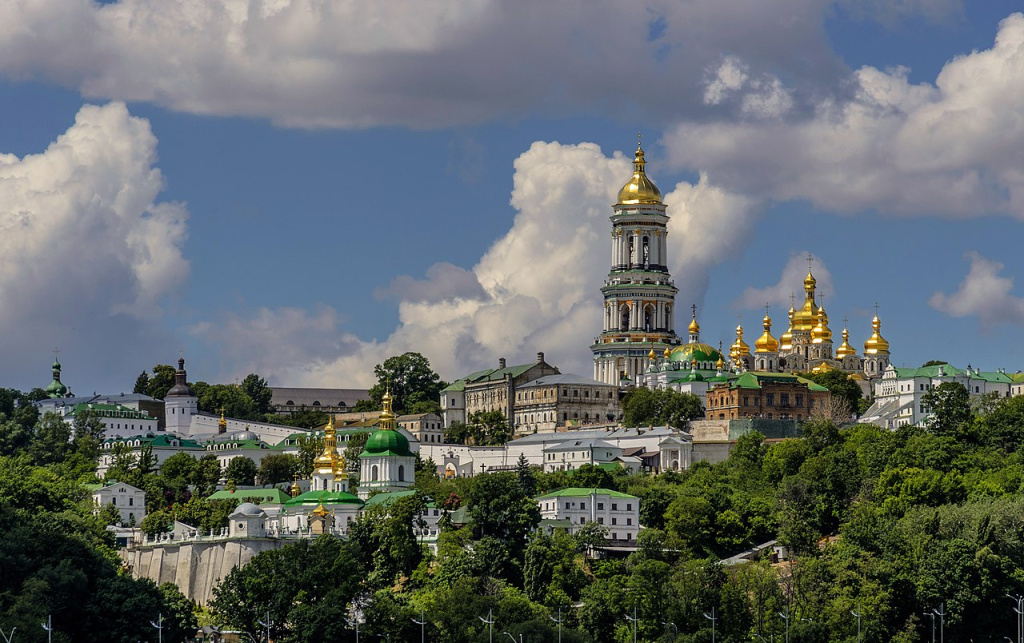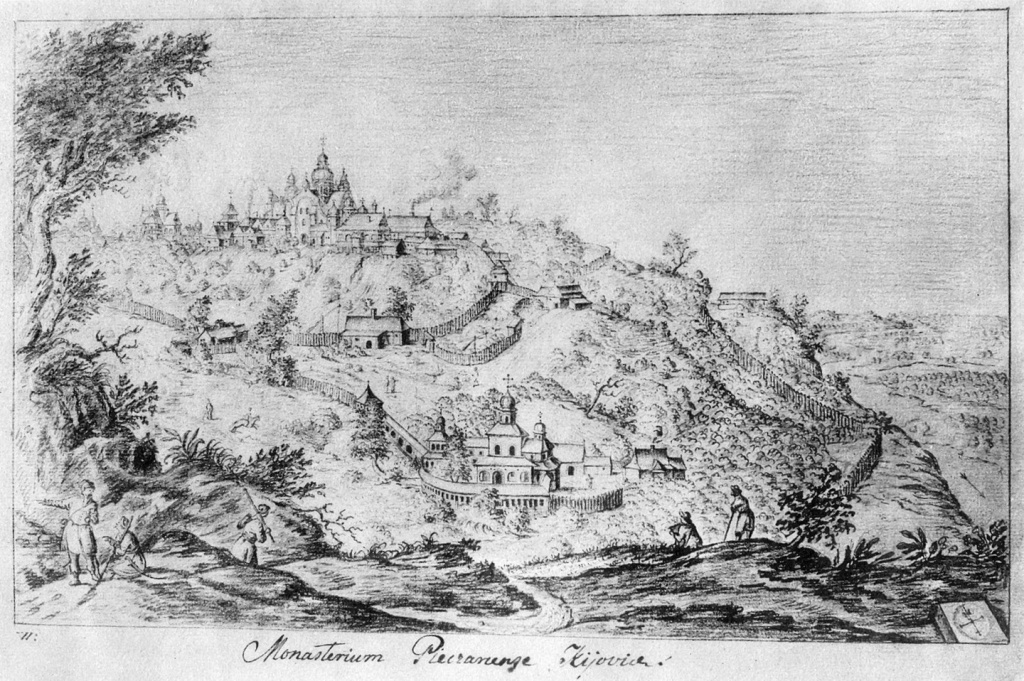Svetlana Smetanina
Kiev-Pechersk Lavra. Photo credit: Falin / wikipedia.org
The Kiev-Pechersk Lavra is one of the most important Orthodox sanctuaries. It has seen many tragic pages in its nearly 1000-year history. Enemies ravaged the Lavra, the Uniates attempted to seize it and it was closed by the secular authorities. However, the monastery always revived after a while.
It is believed that the Lavra was founded in 1051. However, the first cave appeared on the hilly Dnieper bank overgrown with dense forests much earlier. It was dug for secluded prayers by Hilarion, a priest from the village of Berestovoye near Kiev. Grand Prince Yaroslav, who at that time ruled in Kievan Rus', admired the pious priest, and often sought advice from him. In 1051, the Prince appointed Hilarion the first Russian Metropolitan of Kiev. It was a revolutionary step for that time as metropolitans in Rus' had previously been appointed by Byzantium. Furthermore, they were Greeks only.
However, Hilarion entered the history of the Russian Orthodox Church not only through this appointment. He was also a priest, writer, and philosopher. The Sermon of Law and Grace is his most well-known work on the religious theme. It was very popular in Rus' at that time. We know about 50 copies of it dating from the fifteenth to the sixteenth centuries. Hilarion's "Sermon..." glorifies the Russian state and its princes, emphasizing Rus' significant role in world history and God's Providence in its adoption of Orthodoxy, Eastern Christianity rather than Western Christianity.
Hilarion's cave was not deserted. A monk named Anthony who did not like living in the monasteries of Kiev settled in it. Soon he was joined by another monk, Theodosius, from Kursk, and then by several more followers. When their number grew to the number of the apostles (12), they started building cells and churches. It should be noted that Anthony refused to become the head of the monastery. Instead, he dug out a new cave for himself. Prince Yaroslav's son Izyaslav gave the monks permission to use the entire mountain above the caves for their needs. The monastery was named Pechersk (from the Old Russian word "pechera" meaning "cave"). Its first archpriest was Theodosius, the monk from Kursk. So, it was the first monastery in Rus' that was not founded by rich believers but by the monks who attracted considerable donations for the building of the monastery through their piety and strict ascetic life.
Raids and Destruction
Just a few decades later, the Pechersk Monastery was raided and plundered by the Cumans. However, it was restored as early as 1108. It was the time when the first stone structures - a refectory and a church - were built.
The monastery experienced invasions from time to time during the 12th century. The most tragic ravage of the monastery took place in 1240. It happened during the famous invasion of Batu Khan who captured Kiev, plundered the capital of the Old Russian state, and slaughtered most of its inhabitants. Those monks who were unable to flee were killed in a brutal massacre. It seemed that the history of the Pechersk Monastery came to an end... However, one hundred years later it resumed its activity. Although the raids of the steppe hunters repeated more than once.
Schism
A sudden tribulation came from former brothers in faith. In 1596, some bishops from the Kiev Metropolia of Constantinople Orthodox Church signed the Union of Brest, an agreement to accept the Catholic dogma and to submit to the Roman pope. As a result, the Kiev Metropolia was split into Uniates (Greek Catholics) and opponents of submission to the Roman Catholic Church. Since those lands were part of the Polish–Lithuanian Commonwealth back then, the authorities supported the Uniates, and the Orthodox believers became an illegal and persecuted denomination. The feud between the Uniates and the Orthodox believers was long and sometimes bloody.
The Kiev-Pechersk monastery was also affected by this strife. The Uniates planned to seize it but Nikephoros Tur, the archimandrite of the monastery back then, strongly opposed the bishops in Kiev who had joined the Catholics. The archimandrite armed his monks, as well as the peasants living on the monastery's lands, and these "troops" managed to repel the Unitarians' attempts to seize the monastery twice.
The Pechersk Monastery in a drawing by Abraham van Westerfeld, 1651.
Prosperity
Only when the Kiev lands were brought under the authority of the Russian state, the discrimination of Orthodoxy ceased in this region. Since that time the monastery began to prosper and it grew as the Kiev-Pechersk Lavra. The currently known layout of the monastery was created in the 18-19th century. During the reign of Peter the Great, massive stone fortifications were built around the monastery. The Great Lavra Bell Tower was built in 1731-1745. It was the architectural centerpiece of Kiev for 150 years. There were six monasteries in Lavra in the 19th century.
The Great Church of the Kiev-Pechersk Lavra by Vasily Vereshchagin, 1905
Soviet Era and the War
There is another grim parallel to nowadays. Having come to power, the Bolsheviks established the so-called Renovated Church in Ukraine in 1924. This new organization decided to bring Kiev-Pechersk Lavra under the authority of the All-Ukrainian Holy Synod. In 1926, the state authorities decided to establish a historical and cultural reserve within the Lavra territory. Monks were expelled, and many of them were executed by the firing squad later on.
Yet, the Nazis, who occupied Kiev from September 1941 to 1943, caused even more devastating damage to the monastery. A police station was set up in the Lavra where over 500 locals were killed by the Nazis. On November 3, 1941, the Assumption Cathedral, the main cathedral church of the monastery, was blown up. Before that, the Nazis removed valuable items from the temple. It was blown up with the aim to conceal signs of plundering and to destroy the national shrines of conquered peoples. The scrupulous Germans filmed this barbaric action, which later became one of the evidences of cultural genocide at the Nuremberg Trials.
Closure and Kurenivka mudslide
When the monastery was liberated from the Nazis, the monks returned, and the Soviet authorities did not stop them. The state-church relations became better during those years. However, such openness did not last long. During Nikita Khrushchev's time, a new wave of Orthodox Church persecution began. In March 1961, the authorities decide to close the Lavra on the excuse of renovation and restoration works. This took place on March 10. On March 13, Kiev witnessed a horrible disaster known as the Kurenivka mudslide. A dam failed in Babi Yar ravine that had long been used to dump industrial waste from local brick factories. The mud flow of more than ten meters high rushed down to the Podol sweeping off everything in its way. According to official figures, about 145 people died, though there were rumors circulating in the city that many more lives were lost. Locals associated the fatal dam failure with the closure of the Lavra…
Revival and Schism Once Again
In 1988, the Soviet Union had an extensive celebration of the 1,000th anniversary of the Christianization of Rus'. The Council of Ministers of the Ukrainian SSR handed over the Far Caves to the newly created monastic community to commemorate this event. In 1990, the Lavra was added to the UNESCO World Heritage List. The opening ceremony of the rebuilt Assumption Cathedral took place in August 2000.
One could think that all the dark pages of the monastery's history were in the past. However, today the monks of the Lavra face a difficult choice again. They have either to join the schismatic Orthodox Church of Ukraine or to be expelled from the Kiev-Pechersk Lavra by the Ukrainian authorities.
The abbot of Kyiv-Pechersk Lavra Pavel has already been placed under house arrest. Every day believers come to the Lavra to pray together, and every prayer may be their last one. At the same time, supporters of the OCU mock them by turning on loud music and insulting the believers...
Yet, God is the one who always says the decisive word. And the Kiev-Pechersk Lavra, as we know, is the third inheritance of the Virgin Mary on earth.









